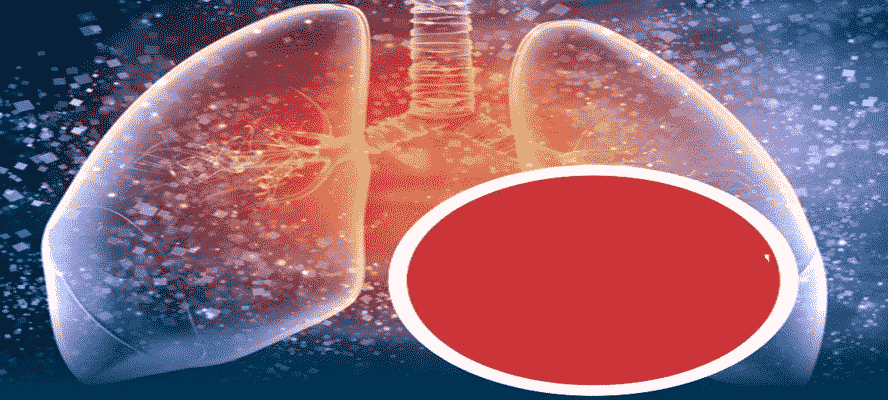Creator of many kid’s dream, Walt Disney, succumbed to lung cancer at the age of 65. His presence in the room was known by his chronic cough, but no one ever realized that something inevitable had already stepped inside the door. His cancer got detected at advanced stage, when nothing could be done to save him.
Lung cancer, the silent killer, typically diagnosed at a later stage, will no longer be hidden. PET-CT has shone light on it and has helped in unraveling the hidden and suspicious.
Lung Cancer: An Overview
Cancer is a medical condition, where cells in the body grow uncontrollably
and when the same condition starts in the lungs, it is termed as lung cancer.
It is the leading cause of deaths among all known types of cancer with 20
lakh (11.6%) new cases and with 18 lakh (18.4%) mortality reported in 2018.
The major risk factor for Lung cancer is active and passive cigarette smoking, followed by tobacco chewing accounting for more than 90% of cases. Even, prolonged exposure to smoke emitted during burning of charcoal for domestic and industrial purposes is also believed to be responsible for increasing incidences. Other risk factors are long-term exposure to certain substances such as asbestos, diesel motor exhaust, arsenic, chromium and silica. For many of these substances, the risk of getting lung cancer is even higher than for smoke. If one has had lung cancer in past, chances of getting it again is very high, particularly when the smoking is continued.
Routine screening for lung cancer is still not implemented, and is the main reason why majority of patients are diagnosed in very advanced stage, when the prognosis of this disease is almost negative. The most common clinical symptoms are dyspnea and cough, however, hemoptysis can indicate more specific symptoms. Lung cancer can be present in different forms such as localized tumor, involvement of lymph nodes, metastases, or non-metastatic systemic effects (paraneoplastic syndrome). Following are the clinical manifestation of Lung cancer at different stages:
- Localized Tumor (T): Asymtomatic (in initial stages), Cough (70%-90%), Hemoptysis (25%-40%), Dyspnea (58%) Wheezing (2-10%), Chest pain, Weight loss
- Intrathoracic involvement of lymph nodes (N): Hoarseness of voice, Phrenic nerve paralysis, Dysphagia, Stridor, Superior vena cava syndrome, Pleural effusion (15%-20%), Pericardial effusion (5%10%), shoulder and upper chest wall pain
- Metastases (M): Brain metastasis, Bone metastasis,Liver and adrenal metastasis
- Paraneoplastic syndrome: Endocrinological, Neurological,Musculoskeletal/ Dermatological, Hematological
Classification of Lung Cancer:
Two major types of Lung cancer are:
- Small Cell Lung Cancer (SCLC): Localized to just one part of the lung and nearby lymph nodes, or can involve other part of the chest.
- Non-Small Cell Lung Cancer (NSCLO: Most common type includes adenocarcinoma, squamous cell carcinoma, large cell carcinoma with following stages:
- StageI: Limited to lungs
- StageII: The cancer spreads in the lung and to the nearby lymph nodes
- Stage III: Cancer is advanced. It has two sub-types:
- Stage IIA: Dissemination to lymph nodes of the same side of the chest
- Stage IIIB: Cancer spread to other side of the lymph nodes or to the above collar bone
- Stage IV: Most advanced stage; involves both the lungs and disseminated to distant organs
PET-CT: Diagnosis of Lung Cancer
Patients diagnosed with lung cancer are managed by a multispeciality
team of doctors to diagnose it accurately, assess the stage of cancer
and provide accurate treatment and follow-up.
Conventional radioimaging techniques for example chest X-ray, computed tomography and magnetic resonance imaging, play an important role in managing lung cancer. However, recent development in radiopharmaceuticals such as introduction of “Ffluorodeoxyglucose (FDG) in Positron Emission Tomography (PET), has significantly advanced the imaging field in proper management of lung cancer. Furthermore, combination of two imaging techniques as a hybrid PET-CT (using F-FDG), has been proven as a blessing to imaging world. PET-CT has an advantage of aiding differentiation between benign and malignant cancer. It helps in clinical decision such as to proceed with histopathological confirmation. It has shown a accuracy of 93.5%, with very low false positivity (6.5%), in diagnosing malignant lung nodules. Most of the time, small localized lung nodules are diagnosed incidentally during radio-imaging for some other cause. After the identification of a nodule, patients are advised to go under further tests to find its nature and extent. In such scenario, PET-CT proves as an advantage in differentiating benign tumor and malignant cancer.
In addition, it has been observed that variations in tumor histology can be precisely studied by PET-CT, based on differences observed in rate of FDG uptake by cells; for example, squamous cell carcinoma have tendency to uptake higher FDG in comparison to bronchioloalveolar carcinoma, adenocarcinoma and carcinoid tumor.
PET-CT in Staging
Once the diagnosis of lung cancer has been made, staging of the disease
is next, to assess the size of the tumor, location and its spread. An
appropriate staging will help in appropriate management of the disease.
This requires combination of imaging techniques to decode the tumor and
to obtain appropriate tissue biopsies from suspicious lesion. In lung cancer diagnosis, TNM staging is the standard approach followed worldwide.
This assesses the size and location of the tumor (T), involvement of
nearby lymph nodes (N) and degree of metastases (M). It helps in
quantifying the lung cancer and helps the oncologist decide optimum
treatment and management.
For initial lung cancer stage, surgical removal of affected part (obectomy), adjuncted with curative chemotherapy is currently considered as gold standard. Stage Il lung cancer patients with good prognosis were ideally offered surgical removal, followed by chemotherapy to prevent resurgence. Stage IIIA managed by surgical removal preceded by combined chemotherapy and radiotherapy, however, stage IIIB lung cancer patients do not go for surgery as it has very limited role, so they are usually manged by a combination of chemotherapy and radiotherapy. Stage IV lung cancer patients are usually offered systemic chemotherapy with or without radiotherapy depending on their status and provided palliative radiotherapy for symptomatic relief.
PET-CT has become a standard approach for appropriate staging of lung cancer and in differentiation of nodal and metastases stages. The importance of PET-CT in staging of lung cancer has now been emphasized by international guidelines, which highlight its advantages in accurate diagnosis for proper management and follow-up of disease.
PET-CT: Evaluation of Response to Treatment
It helps in following up of a disease over a time, such as effect
of chemotherapy and radiotherapy. It provides an opportunity
to measure the level of uptake of FDG by tumor cells, and
therefore can serve as a marker for diagnosis. The relationship
between the level of FDG uptake and tumor cells are directly
proportional increased FDG uptake indicates poor prognosis and
vice versa
PET-CT: Disease Monitoring
During conventional radio-imaging, pathological findings such as
consolidation, atelectasis, and fibrosis (due to radiation) can easily
be muddled with disease resurgence. However, variations in FDG
uptake in PETCT can ease this differentiation. PET-CT can easily
identify the disease recurrence with a sensitivity of 98% and
specificity of 82%, with overall accuracy of 93%. Negative
PET-CT during follow up is highly indicative of positive prognosis.
Conclusion
PET-CT is now considered as confirmed radio-imaging technique widely
used in the management of lung cancer specially NSCLC. It combines
functional information of PET scan with the anatomical information of
CT scan. This combination thus helps to localize the functional abnormality
and also characterize the lesion. Overall, it assesses the staging, metastasis,
effect of curative therapy and also aids in follow-up. Moreover, the importance
of PET-CT in cancer surveillance particularly after treatment is now being
recognized and its demand may increase tremendously in future. It is hoped
that this advancement will improve the patients outcome and also become
cost effective.








